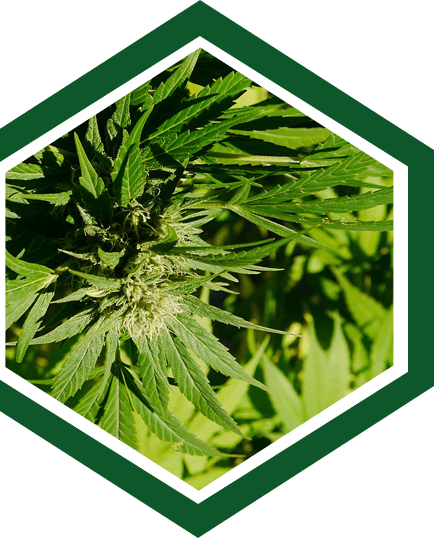 Negative Effects of Marijuana
Negative Effects of Marijuana
Marijuana is known to be a relatively safe drug with minimal health risks and side effects. In fact, negative effects often go unnoticed most of the time. In rare cases where any uncomfortable effects are felt, the experience is often short-lived.
The real danger comes from irresponsible use. Marijuana is a psychoactive drug that causes intoxication. This can mean a decrease in reaction time, awareness and focus.
These impairments of the senses can contribute to such things as car crashes and work-related accidents. Research has shown that driving on weed can be dangerous and increase the chances of an accident. This is the reason why Mothers Against Drunk Driving views driving on marijuana a dangerous choice. According to a survey, it is recommended that 3 hours be given to sober up before driving.
Also, it is recommended to avoid any other dangerous activities, especially ones involving heavy machinery.
So what are the main negative effects that a user needs to be mindful of?
Below are Some of the Most Common Side Effects Associated With Cannabis Use:
- Dry Mouth
- Red Eyes
- Lethargy
- Dizziness
- Paranoia
- Anxiousness
- Headaches
- Nausea
- Vomiting
- Chest Pain
- Rapid Heart Rate
- Memory Retention Issues
- Coordination Issues
- Respiratory Irritation (when inhaling)
- Increased Heart Rate
- Decreased in Blood Pressure
- Drowsiness
- Restlessness
The list above is only the common side effects of cannabis use. There are many other potential risks associated with marijuana use.
All this being said, cannabis is still a relatively safe drug with minimal chance at harm or abuse. Also, any negative effects are often minor and subside rather quickly. The most important thing to do is just relax and enjoy the high, knowing everything will be back to normal in no time.
Lastly, you may be wondering if cannabis is addictive. The overwhelming data indicates that marijuana is not a highly addictive substance. However, there are reports that show that a person’s genetics can influence the level of addiction to weed. Whatever the case, cannabis is not known to be hard to quit.
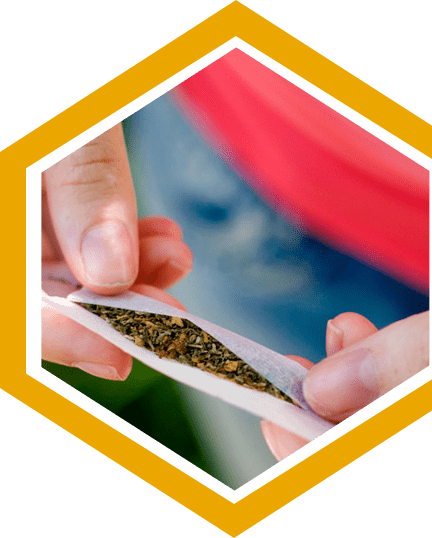 How Long Does Marijuana Stay in Your System?
How Long Does Marijuana Stay in Your System?
When THC enters into your bloodstream it takes time for it to leave your system. The time it will take the THC to completely leave your system largely depends on many factors. For example, tolerance levels, metabolic rate, and dosage level all play large roles.
Even the type of test will play a part in determining if THC will be found in your system. Some tests can detect THC for only a few days, whereas some tests can detect THC for months.
Five different variables that affect the levels of THC found in a person’s system.
It should come as no surprise that a regular weed smoker will have traces of THC found in their system longer than someone who only smoked a joint. The first time users could show no signs of THC in their system in a matter of days. The daily marijuana user could show traces of THC for over a month after last use.
The amount of THC taken will influence how long it will stay in your system. The more THC consumed, the more that will be needed to be broken down. The metabolization of THC takes time and the more there is, the longer it will take.
THC affects the body differently depending on the method of consumption. For instance, THC edibles react with the body differently than smoking weed. This causes the THC from edibles to metabolize slower and stay in the system longer.
The specific body of the user has the largest effect on how long it takes THC to break down. This should come as no surprise as marijuana affects people differently. THC binds to body fat, making the body weight and metabolism a huge factor. Individuals with lower metabolisms and higher body fat will take longer to rid their system of THC.
Different drug tests will get different results. Some tests are much more accurate than others.
-
Urine Tests
are one of the most common testing methods. It can trace THC for between 3 to 30 days.
-
Saliva Tests
are not known to be as accurate and can only detect THC from 1 to 3 days after the last dose.
-
Blood Tests
are another testing method that is not very accurate. These tests can only detect THC from 3 to 4 hours after consumption. This is because THC is known to leave the bloodstream rather quickly.
-
Hair Tests
are by far the most accurate of the tests. Hair tests can detect THC for up to 90 days after the last THC dose.
Can I Get THC Out of My System Quickly?
The bad news is that there is nothing you can really do to make THC leave your system faster. The concentration of THC needs to be lowered to speed up the process. Currently there is no safe and effective way to do this.
So now that we know what cannabis is, the effects, and the uses, let’s outline the different ways to take weed
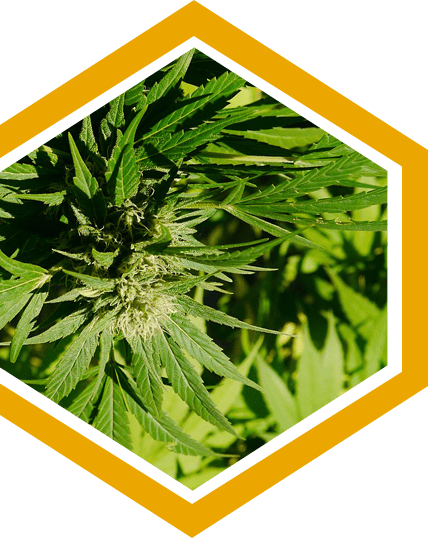 How To Smoke Weed?
How To Smoke Weed?
Did you know that smoking weed in a joint is not the only way to take cannabis? In fact, there are a number of creative and efficient methods to consume marijuana products. To make things better, these methods have been refined and perfected over the years. As a bonus, new ways to take weed are being invented on a regular basis.
However, smoking joints is by far the most common method of cannabis consumption.
Let’s go over the different ways to consume cannabis in more detail.
In a Joint
A joint is marijuana buds that have been broken up and rolled up using a rolling paper. Joints are what most people picture when thinking about cannabis consumption. They are the most popular method of taking weed.
Proper rolling techniques are key to ensuring a nice even smoke. Rolling the perfect joint takes attention to detail and a lot of practice.
Below are instructions on how to roll a joint.
How to Roll a Joint?
-
- Step 1: Buy materials (marijuana buds and rolling papers)
- Step 2: Break up weed with grinder, scissors, or hands
- Step 3: Place cannabis into a rolling paper with the sticky side facing upwards
- Step 4: Place index and middle fingers under rolling papers for support
- Step 5: Pack down weed with thumbs
- Step 6: Roll the rolling paper and weed back and forth until it is round and easy to roll up
- Step 7: Tuck the tip of the rolling paper into the inside of the the joint and roll it up
- Step 8: Lick the sticky edge and secure it to the joint
- Step 9: Enjoy!
Sometimes it is easier to learn when being able to see someone else do it. Luckily, there are currently tonnes of video guides on how to roll a joint.
If rolling is not your thing, then you can order pre rolled joints at any online dispensary. This will save you a lot of time, hassle and sticky fingers. However, make sure you buy pre rolled marijuana from a trusted cannabis store since low quality bud can be used at times. That is why you should always buy weed online from a reliable source such as Just Cannabis.
In a Blunt
A blunt is a larger version of a joint that is wrapped in tobacco leaves. This means that many blunt wraps contain nicotine. Blunts are ideal for large sessions with friends.
How to roll a blunt
- Step 1: Buy materials such as buds and blunt wraps
- Step 2: Break up weed with grinder, scissors or hands
- Step 3: Place cannabis into the blunt wrap
- Step 4: Place index and middle fingers under blunt wrap for support
- Step 5: Pack down weed with thumbs
- Step 6: Roll the blunt wrap and weed back and forth until it is round and easy to roll up
- Step 7: Tuck the tip of the blunt wrap into the inside of the the blunt and roll it up
- Step 8: Lick the edge where you want it to attach and secure the blunt
- Step 9: Prepare to get blasted
Rolling blunts is a challenge for most people. An alternative is to buy pre rolled blunts that are commonly found in marijuana dispensaries.
Using a Bong
Another method of smoking weed is by using a weed accessory called a bong. If you have seen any stoner movie, then you’ve likely seen a bong. It is that glass contraption that people use to smoke weed.
An advantage of bongs is that you don’t need rolling papers and they are reusable. They are also a very efficient way to smoke weed and get the most out of each hit. Smoking marijuana out of a bong is said to be smoother as well.
The main disadvantage of bongs is that they are not that portable due to their size. In addition, bongs get dirty very fast and need to be cleaned on a regular basis. Bongs build up bacteria quickly so keeping it clean is recommended. Cleaning a bong is not easy and takes time and effort.
With a Weed Pipe
A weed pipe is a weed accessory used to smoke marijuana. It is similar to a bong in many ways, but pipes are much smaller. This makes weed pipes more portable to take from place to place.
In addition, it’s very easy to use a weed pipe. It is perhaps the most convenient way to smoke weed. All you need to do is put some weed in the bowl, light it up, and inhale through the other end of the pipe.
Weed pipes should also be cleaned on a regular basis to keep it free from nasty bacteria. The last thing you would want is to be inhaling any into your lungs.
Using a Weed Vaporizer
A common misconception is that smoking and vaping are the same thing. The main difference is that a vaporizer creates vapor and not smoke.
Currently, there are two main types of vaporizers relevant to the topic of cannabis. The first are the vape pens that you see everywhere. But instead of nicotine, they are vaping THC.
The second type of vaporizer is a dry herb vaporizer. These accessories are used to heat up actual buds. This is different from vape pens that are used to vape cannabis concentrates.
Many studies show that vaping is less damaging to the lungs than smoking. However, it is important to make sure you know what you are vaping. This makes it important to buy vape products from a trusted source like Just Cannabis.
Cannabis Dosage Chart
Dosing marijuana can be tricky at times. Especially when dealing with concentrates and edibles. For our purposes, we will go over guidelines to smoking and vaping actual buds.
Below are some general instructions on weed dosing. As we previously covered, THC affects people differently and it is always best to know your own body and limits. This cannabis dosage chart should be taken with a grain of salt and be used primarily as a guideline.
LEVEL
|
(THC)
|
EFFECTS
|
USERS
|
|
Microdose
|
Less Then 3%
|
Non-Psychoactive
|
Microdosers
CBD Users
|
|
Low
|
3 – 10%
|
Light
|
New Stoners
|
|
Medium
|
10 – 15%
|
Moderate
|
Moderate Stoners
|
|
High
|
15 – 20%
|
High
|
Heavy Users
|
|
Master Stoner
|
Higher Then 20%
|
Intense
|
Master Stoners
|
Growing up I always believed that holding in a toke will get me more high since more THC will have time to enter my system. However, studies show that this is not the case and the lungs can only absorb so much on each inhale. Obviously if you just inhale and exhale immediately, that would not be enough time to take in the maximum.
Moving on, vaping and smoking weed are not the only ways to consume THC. A popular alternative is food items infused with THC, or more commonly known as weed edibles.
 Infused with Food to Make Cannabis Edibles
Infused with Food to Make Cannabis Edibles
Enjoying your cannabis in your favorite food items has become so popular that the range of quality edibles are flooding the market. These delicious treats include weed gummies, baked edibles, THC chocolate, and cannabis tea.
It’s no wonder that the edibles Canada community is growing at such a rapid rate. These goodies are perfect for those who want to keep their lungs clean while being able to enjoy their medicine.
The one thing to watch out for when taking marijuana edibles is to not take too much. Eating THC causes it to interact with the body differently. One major difference is the speed at which THC metabolises when ingested. THC takes much more time to break down when eaten, so effects can feel more intense and last longer.
In addition to the methods of consumption, the quality of the cannabis is even more important to the end effects experienced.
Cannabis Quality is Key
Marijuana comes in a range of qualities and are often priced to match the particular level. The most expensive are the premium top-shelf buds, and the cheapest being in the budget bud category.
The experience of the farmer, care taken, growing conditions, and strain genetics all play large roles in how good the buds will be.
Top Shelf Marijuana (AAAA Weed or Quad Weed)
Top shelf weed is the best of the best when it comes to buds, and is perfect for weed connoisseurs. These buds are also commonly known as AAAA weed, quad weed, or just quads.
To be classified as premium marijuana, the potency, flavors, aromas, and appearance need to be at its best. This requires care and attention throughout the entire process; from seed selection, to growing, to drying, and storing.
High-grade cannabis is not easy to grow. The most experienced craft growers spend hundreds of hours on their plants so that we can all enjoy the best smoke possible.
Triple A Weed (AAA Weed)
It is common for something to go wrong during a crop. Oftentimes this leads to the plant not being able to reach its potential, and it lacking in certain areas. For example, the THC levels might be a few percent lower than normal. Or maybe the buds are not as flavorful or dense as they could be.
Whatever the reason, there is usually something negatively influencing its rating. These buds are commonly referred to as AAA weed, triple A weed, or just “trips”. Triple A buds are usually very good and are not far off from higher grades.
An advantage of this class of flower is that the price is often discounted, but a lot of the time the buds are just as effective as quads.
Budget Buds (AA Weed)
The next tier down you have double A weed (AA weed). These buds can often be found at huge discounts and are ideal for those looking for value weed. However, this is referring to the price and not quality, as these buds can still seriously pack a punch. This grade of marijuana flower is more appropriately named budget buds.
The issue with budgetbuds is that there are usually a few things lacking in terms of quality. For instance, they could be popcorn buds (small buds), they could not look as nice, or they could burn a bit more harsh.
If you are lucky, you will get budget buds that taste great and provide the same effects as higher-grade cannabis.
The biggest advantage of budget buds is that they cant often be found at great deals. Some marijuana dispensaries even offer promotions of $89 to $99 ounce deals.
Cheap Weed (A Weed)
Single A weed (aka A weed) is classified as a lower quality than their AA counterparts. These buds are often found at rock bottom prices and are ideal for those looking for cheap weed.
There is usually something more serious that affects the quality of these buds. However, single A buds are still fine to smoke and do the job.
The good news is that there is always a wide range of lower quality cannabis available so you will never never have to worry.
Buds that are lower quality than A weed should probably be avoided if possible. There are many great deals available and at value pricing for cheap weed varieties.
Shake/Trim
Shake is the little bits and pieces found at the bottom of a bag of weed. When buds are touched or moved, things such as leaves, crystals and bits of flower are broken off and fall to the bottom of the bag or container.
If you smoke these fallen particles they will get you high because of all the THC in the crystals. However, shake is known to be much less potent than the buds they came from since there will be higher concentrations of THC in the actual buds.
In addition, many people falsely believe that shake is low quality. In fact, shake from top shelf weed often is more potent and tastes better than many lower quality buds. However, the buds that produce the shake will be higher quality than the shake itself.
Some people mistake shake and trim for low-quality weed. This is a common misconception. The shake from premium quality cannabis can taste and be more potent than buds from low-quality weed.
Trim is a bit different than shake, but the terms are often interchangeable in the cannabis community. The difference is that trim is produced when cutting away unwanted leaves. Some of the leaves will be covered in crystals and many farmers save them so they can extract the THC and make concentrates.
The next thing we should learn about is the measurements you need to know when you buy weed.
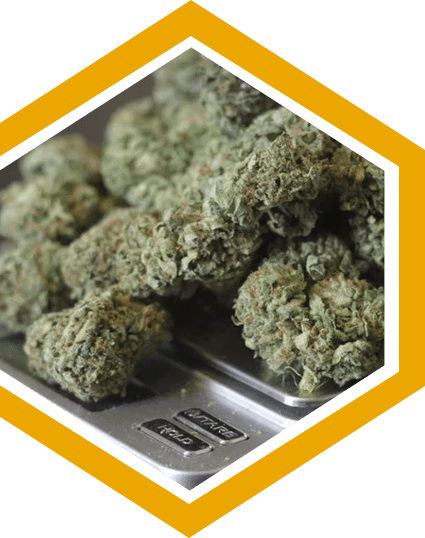 How to Measure Weed
How to Measure Weed
It’s always a good idea to know how to measure your marijuana. This will lower the chances that you are paying too much, or receiving less product than you should. You should always weigh your weed after you purchase it to make sure you aren’t short. If you are, you can contact support, or find a more reliable cannabis store.
The most important measurement to know is the gram. This will be the lowest denomination you will likely deal with. Most people don’t buy single grams because it won’t last very long and usually carries a premium on pricing. A gram of marijuana will normally only roll between 2-4 joints.
That is why most people choose to buy eighths. An eighth of weed is equivalent to 3 ½ grams of cannabis. It is also equal to ⅛ of an ounce, another common measurement figure.
Above an eighth is a quarter ounce of weed. This is double an eighth and also equal to 7 grams of weed. A half ounce is double a quarter and is the same as 14 grams of weed.
Next, we have an ounce of weed. This amount is equivalent to 28 grams of weed. Ounces are usually found at discounted prices because bulk pricing starts kicking in a bit. It should be no surprise that buying an ounce of weed will be cheaper by the gram than buying an eighth.
Bulk weed prices establish themselves when buying pounds of weed. Even buying a quarter pound or half pound will find you savings. In general, the more cannabis you buy, the lower the price per gram will likely be.
Marijuana Measurements Chart
GRAMS
|
OUNCES
|
POUNDS
|
| 1 |
– |
– |
| 3.5 |
0.125 |
– |
| 7 |
0.25 |
– |
| 14 |
0.5 |
– |
| 28 |
1 |
– |
| 112 |
4 |
0.25 |
| 224 |
8 |
0.5 |
| 448 |
16 |
1 |
Any higher amount is not really relevant unless you are a cannabis farmer, producer, or marijuana dispensary. These individuals can deal with tens to thousands of pounds at a time. This would be the wholesale bud territory.

Growing Marijuana
How To Grow Cannabis?
Marijuana legalization in Canada allows for citizens to grow weed in their own homes under certain conditions. The laws are different between Provinces, but the majority allow for a certain amount of plants to be legally grown.
This has created an influx of new cannabis farmers to be added to the growing community. Growing weed is easy under the right conditions. It isn’t called weed for no reason.
However, growing premium marijuana is not an easy task. It can take many years of experience to master the craft. The key to success is time, effort, care, and patience. Many new growers hit many bumps along the way. This can include issues with bugs, mold, mildew, or mistakes on the part of the farmer..
But for those who take their time and pay attention to what they are doing, they should be fine. A lot of planning in the beginning stages will save tonnes of time throughout the grow.
Stage 1: Planning and Preparation
The worst thing you can do is to just dive right in without anything about growing weed. This is the recipe for failure. It might not be difficult to grow a cannabis plant, but it is hard to get high quality flowers.
Therefore, it is recommended to do your due diligence and conduct some research. Go online and search for guides on how to grow weed. You will want to know what equipment and supplies you need, the conditions the plants require and the steps needed during the process. Be sure to be mindful of the common problems growers face and try to take preventative measures.
You can also watch videos on Youtube. There are many great marijuana growing guides that you can choose from. Youtube even has cannabis farmers that post videos with updates throughout the grow. This allows you to see what they do, how they do it, and the results they get. Farmers with great results are ideal to model your own grow after.
Just be sure you can replicate similar conditions. For instance, someone in Northern Canada will likely not be able to grow plants like someone in sunny California.
The 3 main elements you need to know about when growing weed are Nitrogen (N), Phosphorus (P), and Potassium (K). There are also other elements such as Calcium (Ca), Magnesium (Mg), Iron (Fe), and Manganese (Mn) that also play large roles in a cannabis plant’s health.
Other things to be aware of are bugs and mold. These two factors are the main challenges facing cannabis farmers. Make sure you learn all about pest, mold and mildew prevention and control.
You will also want to decide what strains you want to grow and seek out a trusted seed dispensary. It’s important to know if you want to grow photoperiod plants or autoflowers, indicas or sativas, etc. It is always a good idea to buy your weed seeds early since they can take time to arrive if buying online.
Stage 2: Buy Materials
The second step is to buy everything you need. You can either go budget friendly and just get the bare necessities, or you can splurge for the best equipment and supplies available. Top quality weed can be grown with minimal help, but it will be more difficult in many instances.
Also, you will want to decide what medium you will be growing in. You can select from soil, super soil, coco-coir, or hydroponics.
Other materials needed are lights, fertilizers, fans and pots. Some luxury items would include a grow tent, ph Pen, ppm pen, beneficial microbes, humidifier, temperature/humidity gauge, and stakes. The type of grow, conditions available and ability of farmer will determine what is needed.
Once you have everything you need, you can start germinate the seeds and start to grow.
Stage 3: Seed Germination
There are different methods of germinating cannabis seeds. The most common is the paper towel method. First, you put the seeds in a glass of room temperature water for eight to sixteen hours. This allows for the seeds to absorb water and initiate the germination process quicker. Just be sure to not leave the seeds in the water for too long or you can actually drown them.
After the 8-16 hours, you want to get a paper towel and place the seeds on it and fold the paper towel over to cover the seeds. Then add some water to make sure the paper towel stays moist (but not soaking wet). Then place the paper towel in a zip lock bag (or container). The goal is to keep the humidity up. A bit of heat will help speed up the process as well.
The seeds should then sprout and continue to grow each hour. When the seeds have sprouted to about an inch to an inch and a half, you can plant them into your medium. Make sure to add some water as you never want the sprout to dry up and die.
You can start giving the sprout 16 hours of light and 8 hours of dark each day. The light doesn’t need to be that strong in this stage as the sprouts will be weak and fragile.
Stage 4: Vegetative Cycle
As the sprouts start growing you can increase the intensity of the lights since the plants will begin to get larger and stronger. It is at this point you can start feeding your plants as well. Just be sure to start off slow and only give the plants what they need.
For indoor grows, the vegetative phase can last as long as the plants get more than 14 hours of light. Anything lower and there is the risk the plants will start to flower. To be sure, a 12 hour dark and light schedule will usually initiate flowering. Outdoors, the vegetative phase will end when natural daylight times drops to about 14 hours of light in most places.
The vegetatvie cycle is the time where the plants put on their most leaves and mass. The bigger the plants and bigger the harvest, the more veg time you want to give them.
An important thing to note is that for the first three weeks of flowering, the plants will undergo a stretching period and can even double in size in some cases. So just be sure to plan for this because things can start to get pretty crowded in your garden.
Stage 5: Flowering Cycle
The next phase is the flowering cycle and is initiated when the amount of light drops to a certain point. This is 12 hours for indoor grows and about 14 hours for outdoors (although this is just a guideline).
It is the flowering phase that is usually the most enjoyable (or stressful) time of the grow. The experience will largely depend on if there are any problems that arise. The flowering portion of a cannabis grow faces the most challenges.
The main obstacle being mold and mildew. There is nothing good about putting in months of hard work only to lose your plant to mold. It is therefore important to keep humanity levels down and give your plants great airflow. Keeping the temperature up helps as well.
If all goes well this stage is where the cannabis plants produce their beautiful and fragrant flowers. There is nothing more rewarding than watching your plants grow each day into stunning plants.
Weeks 1 – 3: During the first 3 weeks of flowering, plants will go through a growth spurt. In the third week, pistils will start to show. These are the beginning of the buds that will start to appear in the next few weeks.
Weeks 4-5: The next 2 weeks the plant will stop growing and focus its energy in producing buds. This means the plant will start to require less nitrogen and start needing more phosphorus and potassium. The new buds will start to pop up all over the plant during these 2 weeks.
Weeks 6-8: During weeks 6 to 8, the buds will start to get fatter and more dense each day. Eventually new buds will stop appearing and all the flowers will be producing THC at its peak levels. In addition, these weeks are when the aroma of the flowers become very noticeable. However, this period comes with high risk of mold so beware and check your plants often.
Weeks 9+: These final weeks are not needed for some strains. For instance, many indica dominant strains only take about 8 weeks to flower. Sativa dominant strains are usually the plants that require these longer flowering periods.
Different cannabis strains have different expected flowering times, so it is best to check the breeders recommendations.
Stage 6: Drying & Curing Weed
These stages are often overlooked by many growers, especially the curing portion. Freshly cut marijuana needs takes time to break down the chlorophyll, and time for THC to ripen. In addition, when THC degrades over time, it converts into CBN and provides a more sedating effect that is sought after by many. This is why so many growers try to prolong drying and curing.
Drying cannabis can take anywhere from a few days to a couple weeks. This will depend on the size and density of the buds, and the temperature, humidity, and airflow of the drying area.
Curing weed is the process of allowing buds to dry slowly. Once buds are dried properly, they can be placed into containers such as mason jars. The key is to open up the jars from time to time to allow moisture to escape and allow new oxygen in. The humidity level should ideally be between 59 to 63% during curing. Just be sure to watch for mold. If at any time the buds feel moist to the touch, leave the jar open or take the buds out until they are dry to the touch before continuing curing.
Stage 7: Storing Marijuana
Storing cannabis is a simple process as long as the buds have been dried and cured properly. In fact, if the buds are dried to an ideal level, the buds can be stored for over a year.
The key is to store weed in a dark and cool place. This prevents the THC from degrading due to light. The cool temperature ensures that the buds will not grow mold or bacteria.
Also, long term storage is possible by placing your weed in the fridge or freezer, and in freezer-safe bags. This will help extend the shelf-life by preserving the THC and other therapeutic compounds.
Different Types of
Cannabis Products
Did you know that there are a variety of different products that are made with cannabis? Weed has been around so long that many innovative ways to extract THC from marijuana have been invented. This has led to categories of products such as cannabis concentrates, weed edibles, CBD products, and weed vapes.
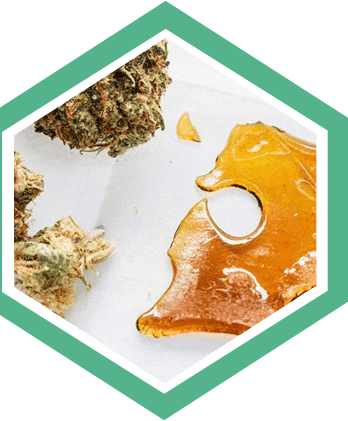 Cannabis Concentrates
Cannabis Concentrates
This category of cannabis product is made by extracting THC and other therapeutic compounds from marijuana. The main goal is to remove the unwanted plant material. This results in higher concentrations of THC, making cannabis concentrates some of the most potent products on the market.
The extraction process can potentially be very dangerous and should be left to the professionals who have the experience and equipment needed.
The good news is that there are a huge variety of products available at the many cannabis stores around.
Here are links to some of the most popular cannabis concentrates
 Weed Edibles
Weed Edibles
Cannabis edibles are any food items that are infused with THC. Basically, a cannabis concentrate is added to food, and when eaten it induces effects of marijuana.
Weed edibles are ideal for anyone who does not want to inhale anything into their lungs. They are also perfect for those looking for a tasty way to take their medicine.
Also, it should be mentioned that THC edibles affect the body differently than when smoking. The THC metabolized slower with edibles and effects are often more intense and long lasting.
Whatever the case, weed edibles are growing in popularity with items such as baked edibles and weed gummies readily available. This includes some of the best tasting weed brownies and pot cookies.
Below are links to some of the most popular edibles on the market
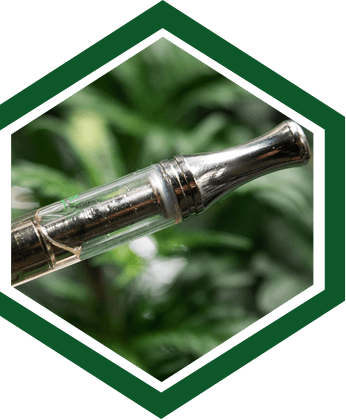 Weed Vapes
Weed Vapes
The next category of marijuana products is weed vapes. Vaping weed has gained in popularity in recent years for many reasons. For example, vaping cannabis is convenient since there is little prep work needed and practically no clean up required.
Also, vaping weed does not produce much of an odor, so this allows for a much more discreet session then compared to smoking a joint.
Here are the main components of a weed vape with links.
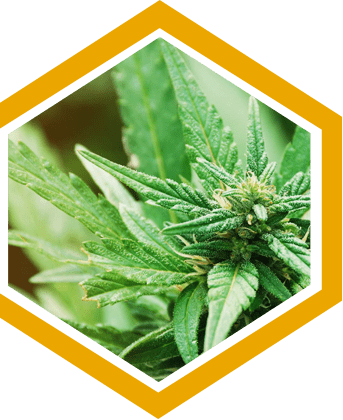 CBD Canada
CBD Canada
Did you know that there are cannabis products that don’t get you high? These are known as CBD products and contain only small traces of THC. You can even get CBD isolate which has no THC at all.
CBD is a non-psychoactive substance that does not induce intoxication. Cannabidiol is used to enhance the effects of other cannabinoids in the body.
Below are links to some of the most popular CBD products available
Buy Weed Online in Canada
With Confidence at Just Cannabis
Selecting the ideal marijuana dispensary can be a challenge at times. Especially when there are hundreds of weed shops to choose from.
This is why it is always important to do your research on a company before buying from them. A good way to do this is to read through customer reviews since it is likely you will receive service like they have.
One great online weed dispensary is Just Cannabis. They provide some of the best deals on some of the highest quality products in Canada.
They provide mail order marijuana services to all of Canada; from Toronto Ontario to Vancouver BC to everywhere in between.
In addition, they offer free shipping, mix and match options, and frequent deals and promotions. So don’t miss out and start saving when you buy weed online at JustCannabis.














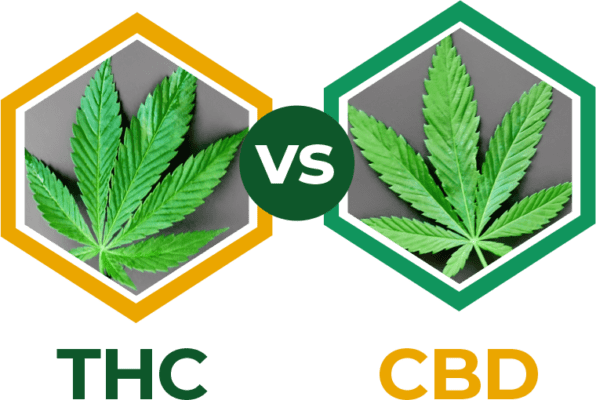





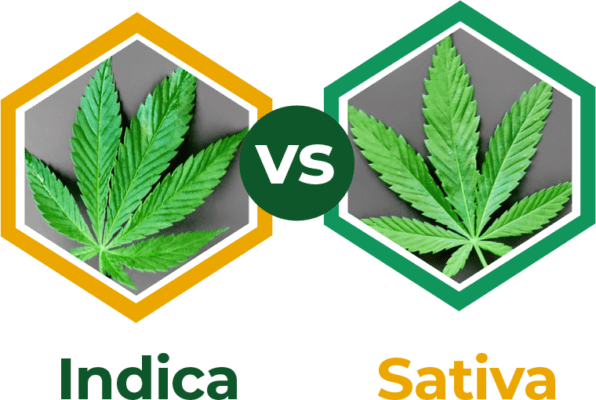


 Cannabis Hybrid Strains
Cannabis Hybrid Strains







 How to Measure Weed
How to Measure Weed



